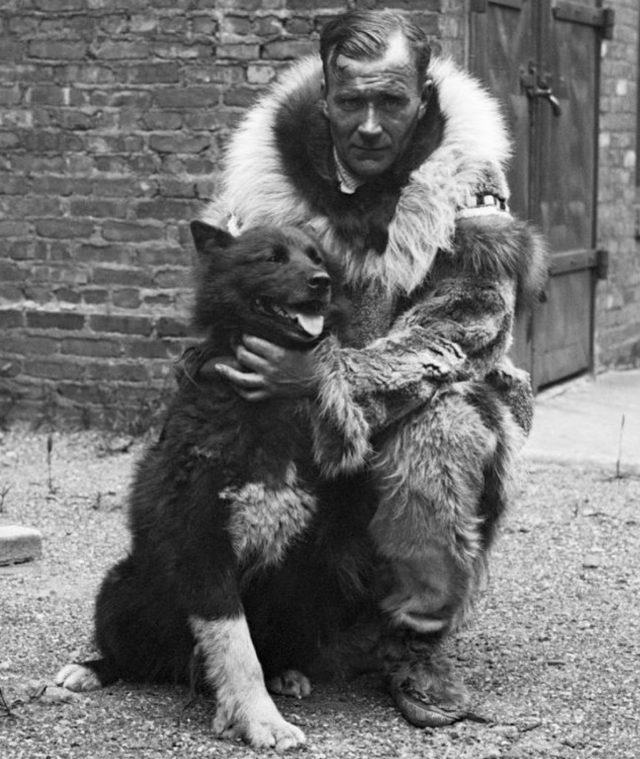
In 1925, a sled dog named Balto led his plucky canine team on the last leg of a grueling 127-hour dogsled relay across Alaska to bring lifesaving medicine to the people of Nome—the famous "Serum Run." Balto was lionized for the feat, even inspiring a 1995 animated film and two sequels. Now scientists have sequenced the dog's genome for the first time and compared it to modern dog breeds, shedding light on why Balto and similar sled dogs from that period proved well-suited to thrive in the harsh winter environment.
It turns out Balto was just part Siberian husky, and, contrary to popular legend, he was not part wolf. The authors even used the sequenced genome to reconstruct Balto's physical appearance. These and other findings appear in a new paper published in the journal Science. It's one of several featured in a special issue reporting on results from the Zoonomia Project, an international collaboration to sequence and compare the genomes of 240 mammals in order to discover the genomic basis of traits essential for all animals, as well as changes that underlie the unique traits of individual species.
“The fact that the DNA from a tiny sample of Balto’s skin can provide new scientific insights is a powerful reminder of how advances in science continually allow us to glean new information from museum collections,” said Gavin Svenson, chief science officer of the Cleveland Museum of Natural History in Ohio, where Balto's taxidermied remains are housed. “Every one of the millions of objects in our museum has the potential to reveal an important clue to a future scientist, who in turn can enhance our understanding of the past, present, and future of the world around us.”
Balto was born in 1919 to musher and sled dog breeder Leonhard Seppala. Balto was neutered at six months old because Seppala considered him a "scrub dog," stouter and stronger than the small, fast racing huskies Seppala typically bred and thus more suited to hauling freight. But the dog would go on to prove his mettle when a severe diphtheria outbreak hit Nome in January 1925, and the city's port was icebound and hence inaccessible from the sea.

The lifesaving serum the residents needed was in Anchorage, some 674 miles away, and the engine of the single available aircraft froze and wouldn't start. So officials decided to organize a relay of sled dog teams. The conditions faced by the more than 20 mushers who participated in the Serum Run were brutal, featuring powerful winds and temperatures of -23° F (-31° C), as well as a blizzard.
A musher named Gunnar Kaasen was in charge of Balto's team of sled dogs. Kaasen took charge of the serum package on February 25 in Bluff and drove the sled to Port Safety, where the last team, led by musher Ed Rohn, was supposed to take over for the final leg of the run. Kaasen got there earlier than expected, and Rohn was still asleep, so Kaasen decided to save time and run the final leg himself, with Balto in the lead. They arrived in Nome at 5:30 am the next day and handed out the ampoules of medicine. Legend has it that after delivering the medicine, Kaasen hugged Balto and declared him a "damn fine dog."
It should be noted that there's some controversy over whether Balto actually led the sled dog team, given his relative lack of experience in that role, or whether it was led by another dog named Fox. The historic photographs and video of Kaasen with Balto in Nome were re-creations taken hours after their arrival. Rohn and several other mushers thought that Kaasen's decision not to wake Rohn was less altruistic than Kaasen had claimed—namely, that he wanted to hog all the glory for himself. Even Seppala was displeased at Balto's sudden celebrity. Seppala had always been disappointed in Balto and felt his dog Togo, who led another team, deserved equal recognition since Togo's team had endured the longest and most dangerous part of the run. (Togo did eventually get a Disney film in 2019.)
Science - Latest - Google News
April 28, 2023 at 01:00AM
https://ift.tt/cDnCpak
Scientists sequenced the genome of Balto, famous sled dog of 1925 “Serum Run” - Ars Technica
Science - Latest - Google News
https://ift.tt/hz1erqI
https://ift.tt/uIdkU5m
Bagikan Berita Ini

















0 Response to "Scientists sequenced the genome of Balto, famous sled dog of 1925 “Serum Run” - Ars Technica"
Post a Comment